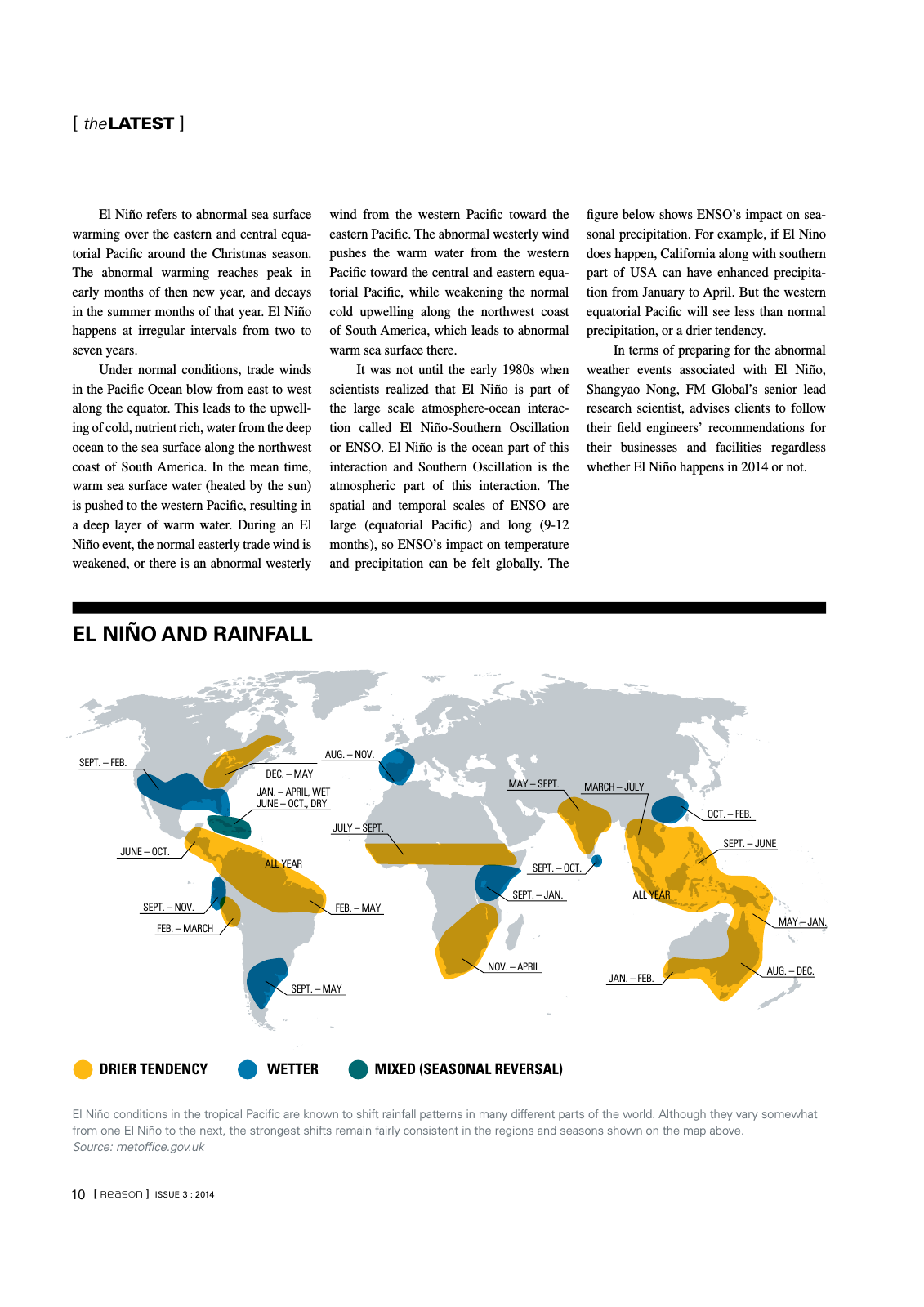Reason Magazin 2014Q3 Seite 10
Hinweis: Dies ist eine maschinenlesbare No-Flash Ansicht.Klicken Sie hier um zur Online-Version zu gelangen.
Inhalt
10 Reason ISSUE 3 2014 theLATEST El Niño refers to abnormal sea surface warming over the eastern and central equa torial Pacific around the Christmas season The abnormal warming reaches peak in early months of then new year and decays in the summer months of that year El Niño happens at irregular intervals from two to seven years Under normal conditions trade winds in the Pacific Ocean blow from east to west along the equator This leads to the upwell ing of cold nutrient rich water from the deep ocean to the sea surface along the northwest coast of South America In the mean time warm sea surface water heated by the sun is pushed to the western Pacific resulting in a deep layer of warm water During an El Niño event the normal easterly trade wind is weakened or there is an abnormal westerly wind from the western Pacific toward the eastern Pacific The abnormal westerly wind pushes the warm water from the western Pacific toward the central and eastern equa torial Pacific while weakening the normal cold upwelling along the northwest coast of South America which leads to abnormal warm sea surface there It was not until the early 1980s when scientists realized that El Niño is part of the large scale atmosphere ocean interac tion called El Niño Southern Oscillation or ENSO El Niño is the ocean part of this interaction and Southern Oscillation is the atmospheric part of this interaction The spatial and temporal scales of ENSO are large equatorial Pacific and long 9 12 months so ENSO s impact on temperature and precipitation can be felt globally The figure below shows ENSO s impact on sea sonal precipitation For example if El Nino does happen California along with southern part of USA can have enhanced precipita tion from January to April But the western equatorial Pacific will see less than normal precipitation or a drier tendency In terms of preparing for the abnormal weather events associated with El Niño Shangyao Nong FM Global s senior lead research scientist advises clients to follow their field engineers recommendations for their businesses and facilities regardless whether El Niño happens in 2014 or not El Niño conditions in the tropical Pacific are known to shift rainfall patterns in many different parts of the world Although they vary somewhat from one El Niño to the next the strongest shifts remain fairly consistent in the regions and seasons shown on the map above Source metoffice gov uk EL NIÑO AND RAINFALL DRIER TENDENCY WETTER MIXED SEASONAL REVERSAL SEPT FEB AUG NOV JULY SEPT MAY SEPT MARCH JULY JUNE OCT SEPT NOV FEB MARCH DEC MAY FEB MAY SEPT MAY OCT FEB MAY JAN AUG DEC NOV APRIL SEPT JAN SEPT JUNE SEPT OCT JAN FEB JAN APRIL WET JUNE OCT DRY ALL YEAR ALL YEAR
